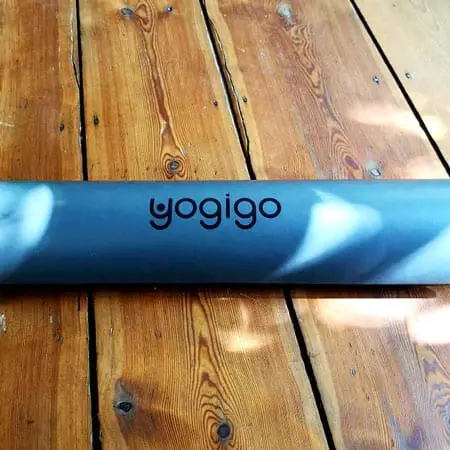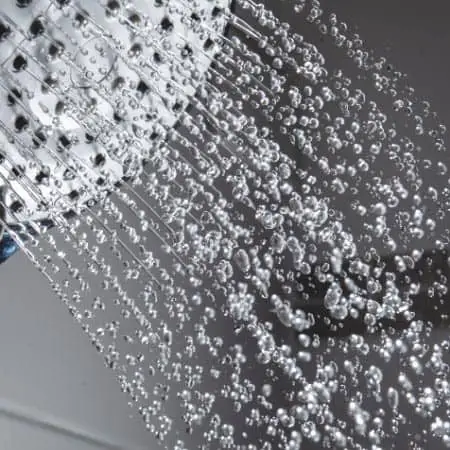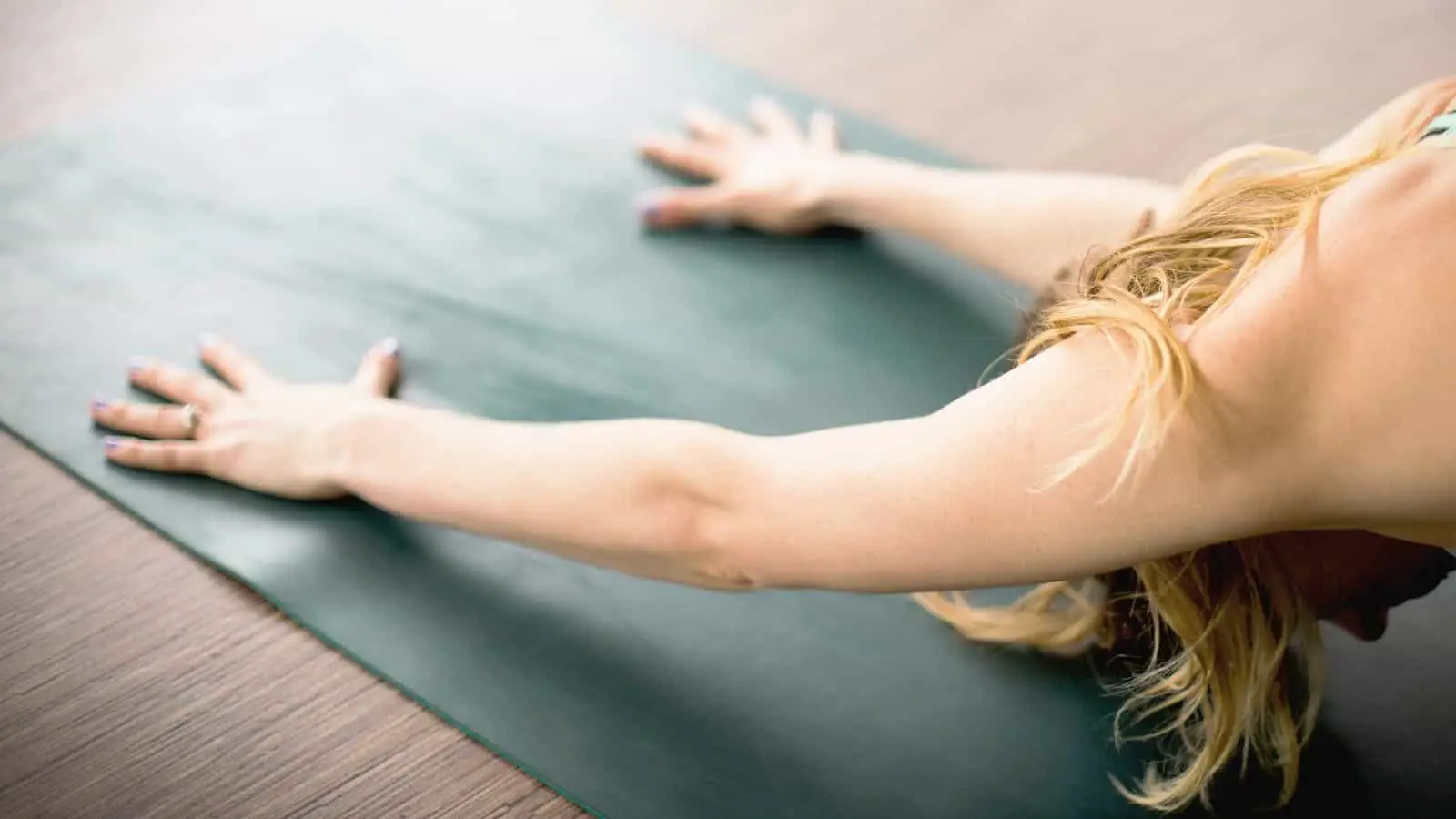Every journey begins with a first step, and yoga is no different. To get the best out of your yoga practice, having the proper yoga mat will be essential – especially the one that has a good grip. But what to do if you already have a mat on which you are sliding during your yoga practice? What are the best ways to fix a slippery yoga mat?
You can take many steps to make your yoga mat less slippery: sea salt scrubbing, machine washing, flipping, layering, investing in a different type of yoga mat, and taking specific steps before each yoga session.
Let’s take a closer look into some simple ways to reduce the slipperiness of your yoga mat so that you can get the best out of your practice.
Apply an Astringent Cleanser

As simple as yoga mats may appear, they are definitely not all made equal. They come in various materials, including TPE, PU, PVC, NBR, Jute, and Natural Rubber. Some of these are inorganic materials that may be cheaper to purchase but have short life spans, are potentially toxic to the environment, and, most notably for us here, will be slippery.
Your best options in terms of durability, environmental friendliness, and non-slipperiness will be Natural Rubber (or Natural rubber base) and PU top yoga mats. The advanced yogi will be well suited with a Jute mat. Inorganic mats (TPE, PVC) will often come with a coating intended to keep them in good condition during the shipping and handling process, which gives them their slippery quality.
An astringent cleanser is one that will cut through this layer, leaving your mat in a suitable state for your use. Mixing in apple cider vinegar and using a cloth to scrub or cleanse the mat’s surface will do nicely. To dry it afterward, hang it out to dry where there is good air circulation.
You should avoid direct sunlight because it may damage your mat. Check out our guide to keeping your yoga mat clean for more details on how best to go about this.
Break It In
One of the simplest ways of getting rid of your yoga mat’s slipperiness is allowing the time “to wear it down” naturally. Just like a new pair of trainers, using your mat over time will not only eliminate the slippery sheen on its surface but will also see it adapt to your own particular preferences and positions.
It isn’t a matter of wearing your mat out, but wearing it in. Your hands and feet will create indentations and grooves where they press down the most, eventually affording you all the traction you need for effective mat work. Persevere for a number of sessions, and your mat should eventually become one with you.
Apply a Sea Salt Scrub
This is one of the most effective and eco-friendly methods you can employ to lessen your mat’s tendency to slip. Take a handful of sea salt and sprinkle it over the surface of your mat. With a wet cloth, go on to scrub the mat surface very gently, paying particular attention to the areas where your hands, knees, and feet most often find themselves.
Take note that this isn’t applicable to all mats out there – sea salt scrubbing might significantly damage PU top, Jute, microfiber top yoga mats, for example. Use this particular method for PVC, NBR, TPE, and such inorganic yoga mats to help get rid of the slippery cover layer.
Use Microfiber Yoga Towels
Another quick and easy solution here is the use of microfiber cloth barriers. These are towels you can place on the top of your yoga mat to put a stop to any inconvenient slips and slides. It will only take you a few seconds to set up your towels for a soft and comfortable yoga experience.
A more elegant solution here will be to get your hands on a microfiber top yoga mat with a natural rubber base. This effectively combines the gripping strength of microfiber with the cushion and support of non-toxic natural rubber.
Wear Non-Slip Accessories
There are plenty of accessories you can incorporate into your yoga regimen that will make a slippery mat a non-issue for you. As you take the time to break in your mat, wearing specialized yoga workout gear such as yoga socks with rubber padding underneath will ensure you get to enjoy a comfortable, posture-perfect session.
Use them on mats that may come with a very slippery surface, such as PVC, NBR, and TPE. PU top and natural rubber mats will make such a measure is unnecessary.
Switch Mat Materials
Should your yoga mat’s slippery tendencies be a significant hindrance to your yoga practice, you might be better off switching to one made from a different material. PVC and other inorganic mats are the most notorious in terms of slipperiness, but natural rubber or PU top mats will give you a good amount of grip even when brand-new.
Keep this in mind when the time comes to upgrade.
Could You Be the Problem?
Slipperiness might not be entirely the mat’s fault – there are a couple of things you can take care of yourself in order to improve the amount of traction you get on your yoga mat.
Shower Ahead of Each Session

If your yoga sessions are part of a general exercise regime, your body might be heated up and sweaty as you begin your practice. Take a few minutes to wash up and get your body cooled back down before you start with your yoga to minimize the slick effects of the oils and sweat from your body.
A great solution for those yogis out there that simply can’t avoid ending each session in a puddle of their own sweat will be to get a microfiber top yoga mat. These mats will not only absorb the sweat that gets onto them; they will actually become grippier when they take in the moisture. This makes for a great, natural, and hassle-free way to get around your predicament.
Don’t Use Oils or Lotions Ahead of Your Sessions.
Many of the skincare products we use can play a part in making our palms and feet slippery when we get onto the mat. In some instances, lotions will ‘reconstitute’ and become slippery once our bodies warm up, creating a slippery skin surface where we thought we were perfectly dry before.
If you’d rather not skip the lotion at least a few hours before your yoga sessions, be sure to give your hands, feet, and knees a good scrubbing with soap and water before beginning.
What Not to Do
In order to keep your mat in good condition for as long as possible, there are some things you should avoid doing even as you try to eliminate any slipperiness.
Use Sandpaper
This might seem superfluous to some of you, but you’d be surprised at some of the lengths people go to when trying to handle slippery mats. No harm in repeating it here. Do not use sandpaper on your yoga mat, no matter what material it is made of. You will only end up ruining it for no purpose.
Tumble Dry
Some mats are compatible with washing machine cleaning, but drying them out requires a measure of care. Be sure to avoid using tumble dryers to dry out your mat after cleaning, whether by machine or by hand. The heat from these machines will often damage them.
Hang it Out to Dry in Direct Sunlight
It would be best if you never stored your yoga mat while it is still wet due to the potential for mold buildup and unpleasant mustiness. Even so, you need to be careful how you go about drying it out. Avoid direct sunlight here as this might cause damaging results to your mat, including a loss of grippiness and warping (rolling up) of the mat itself.
This happens because high heat will cause the mat material to change in character.
Use Harsh Chemicals
Sea salt or baking soda solutions may safely be used when trying to get rid of the slippery upper layers of new mats. Avoid the use of strong chemicals or detergents as these will get into the groves and pores of your mat, where they might stay for extended periods of time.
This might not only reduce the quality and effectiveness of your session but may damage your mat in the bargain.
Final Thoughts
Proper grip or traction is essential for your yoga practice to be safe, as a slippery mat will cause you to lose balance and make it almost impossible to achieve correct poses or smooth movements.
Safety should always be a priority in your yoga sessions. While you’ve got plenty of options when it comes to fixing slippery yoga mat problems, you have to be careful not to damage your mat in the process.




